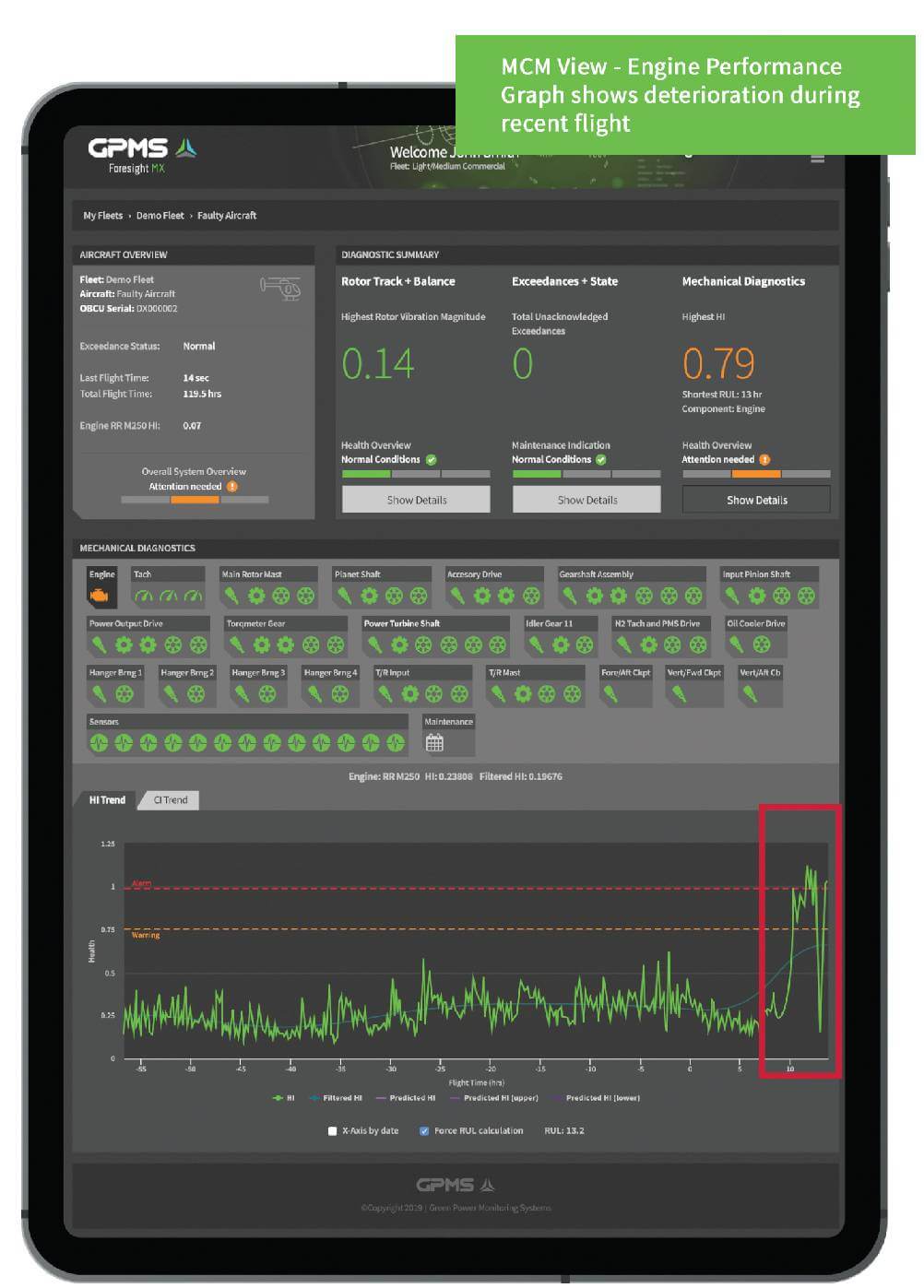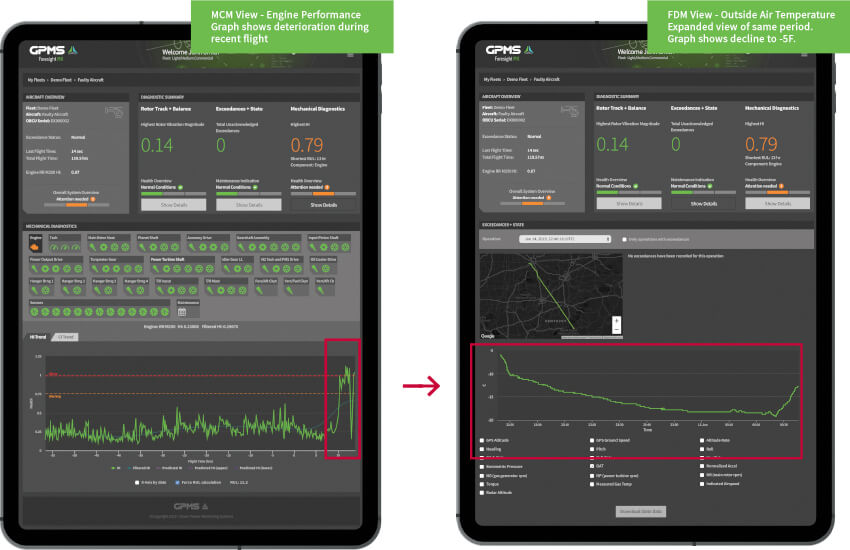Remote Monitoring Case Study
One of the key benefits of the GPMS Foresight system is the ability for operators to use it to access flight and machine monitoring data when the aircraft is away from base. This remote monitoring capability enables remote troubleshooting, which saves significant time and money.
A GPMS customer saw this firsthand in 2019 during a polar vortex.
A Maintenance Call Away From Base
In January, our customer’s helicopter was performing power line inspections several hundred miles away from its base when the pilot called in and reported low engine power. He landed at a regional airport and requested a maintenance test to confirm the aircraft was safe to fly.
Two Ways to Respond
Before GPMS Foresight
The chief mechanic would have typically responded to this request by getting on a plane, equipped with tools to perform a maintenance test on site. In this instance, the trip would have required an overnight stay with associated expenses, interruption of other work at the base, and time away from home.
And until that inspection could happen, the helicopter would be out of service and unproductive.
Response with Foresight
With Foresight onboard, the mechanic was able to assess the situation remotely. Foresight captures machine and flight data and automatically offloads it into the Foresight cloud. There it is transformed into an interactive dashboard and is accessible via any device with a browser and an internet connection.
In this case, the mechanic noticed an orange Health Indicator in the Mechanical Diagnostics area. Drilling down into the diagnostics, he could see that Engine Performance was trending dramatically upward, indicating a loss of power.

On a hunch, he clicked over to the Exceedances and flight data monitoring (FDM) area. Foresight tracks over 30 parameters in each flight, and the mechanic selected Outside Air Temperature and saw that OAT had dropped over the course of the flight to -5F, rising back up as the aircraft descended.

The mechanic hypothesized that the pilot reacted to the cold temperatures by turning bleed air on to heat the cockpit. He called the pilot, who confirmed this. Knowing that a 7% drop in engine performance was within normal range when bleed air is on, the mechanic was able to confirm that the aircraft was safe to fly — all without leaving the hanger.
The Result
Due to remote monitoring, the customer was able to forgo an expensive maintenance trip for the mechanic and limit the loss of productivity for the pilot and aircraft. In fact, when you add up incremental productivity (revenue) and potential trip costs (savings), this incident had a net benefit to our customer of several thousand dollars. All in all, another good proof point for Foresight.
